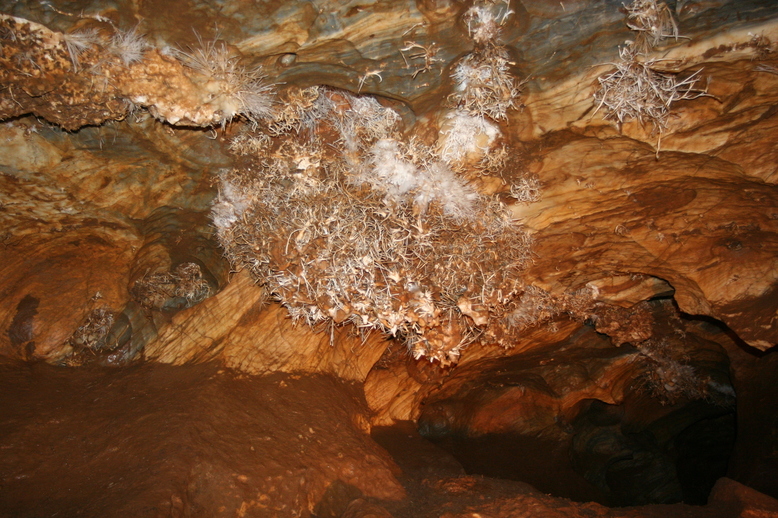“There are two sorts of rocks in Lehman Caves,” the recreation center officer told the gathering. “Headbangers and kneeknockers. Watch for both when no doubt about it.” Then she drove us through an overwhelming entryway and into a long solid passage. The patter of our strides dashed and crashed along the passage’s length. The serene, 50-degree Fahrenheit (10-degrees Celsius) air chilled us as we went through the entryway that finished the sealed area, and we at last entered the underground maze.
At the point when the sun is setting, Great Basin National Park in east-focal Nevada lies in the shadow of the Snake Range’s Wheeler Peak, which, at 13,063 feet (3982 meters), is the most elevated point entirely inside Nevada. A great many years prior, magma encroached into the joint between the quartzite, comprising the greater part of the Snake Range, and the limestone along the range’s eastern flank. The magma’s warmth transformed a portion of the limestone into marble. That was the pivotal initial phase in the development of the caverns.
At one time, the atmosphere of eastern Nevada was more sticky than it is today and, thusly, the water table was higher. Water, which ingests carbon dioxide from the air to shape carbonic corrosive – the frail corrosive of soft drink – splashed into the ground and broke down the marble. As the atmosphere dried, the water table dropped, and the streaming water rose into vaulted rooms and paths. Losing its carbon dioxide, the fluid kept its weight of the mineral calcite (calcium carbonate) at the slower than snail’s pace – an inch for every century – to frame soft drink straws, stalactite knifes, stalagmite stumps, strange shields, effortless draperies and sections looking like the remains of antiquated Greece. To keep the contrast between cavern includes clear in your psyche recall that “stalactites” has the letter “c” and this component descends from the roof, and the word for the other surely understood element “stalagmites” has the letter “g” and comes up starting from the earliest stage. So it’s “c” for roof (stalactite) and “g” for ground (stalagmite).
In reality, stalactites end up being soft drink straws that ended up stopped up. Soft drink straws have mineral-loaded water dribbling down through the middle and deserting rings of minerals that can broaden extraordinary separations whenever left undisturbed, up to 30 feet (9 meters). On the off chance that the end winds up stopped, in any case, water can begin trickling down the outside of the straw leaving minerals outwardly of the straw that keep on developing an outward way, in this way getting to be stalactites, as the previous straw currently begins to thicken.
Into the Gothic Palace
As the officer drove us past the cavern’s characteristic passageway and into the Gothic Palace, she stopped to enlighten us concerning Absalom S. Lehman. The owner of a farm on the eastern inclines of Wheeler Peak, Lehman found the collapse 1885. In that year, he guided 800 individuals through its rooms and ways; guests needed to move down stepping stools into the vertical passageway, utilizing just light lamps for enlightenment, as per the officer.
At the point when our gathering was somewhat more remote along the way, the officer killed the electric lights, leaving just a flame lamp as our light source. As she raised the lamp starting from the earliest stage, shadows moved over the by one way or another amplified chamber. “Would you be able to envision investigating the caverns along these lines?” she inquired. After the lights were exchanged back on, we proceeded with our six-tenths of a mile (1 km) venture through the white complex of thin, turning ways and voluminous chambers. A few hallways resembled craftsmanship exhibitions showing their models straightforwardly. Different hallways clouded their fortunes in jumbling folds.
The Wedding Chapel and Beyond
After the Gothic Palace, with its curving roof and tall sections, we achieved the open Wedding Chapel, which was really utilized for five wedding services in the nineteenth century. In the nearby Music Room, early visit aides would deliver melodic notes by tapping on the stalactites with hammers. In any case, this training was suspended after a portion of the stalactites were found disintegrating.
Up past wooden stairs, our gathering happened upon the Tom-Tom Room, which has the most renowned geographical component of Lehman Caves – saucer-molded plates called shields or beds, calculated out from the dividers. Nobody knows precisely how shields create. They may shape when water, under strain, rises through breaks in the dividers to store flimsy movies of calcite, making various sets of confronting plates that appear to challenge gravity. Step by step, water constructs sections underneath a large number of these shields. They just happen in one percent of all realized limestone caverns; so Lehman Caves would be extraordinary if just for its wealth of shields.
Going past the Dragon’s Den and the Queen’s Chamber, the officer achieved the Lodge Room at the junction of the trail framework in the caverns. She depicted how Clarence T. Rhodes, the main caretaker of the cavern after it had turned out to be open property, had encouraged individuals from the Knights of Pythias and the Boy Scouts from close-by Ely, Nevada, to hold their gatherings here. Since the legislature didn’t have any cash in the state spending plan to pay him. Mr. Rhodes was qualified for any expenses he may charge for affirmation and, consequently, had a personal stake in advancing the caverns. Lamentably for the Lodge Room, those guests thumped down a portion of the roof developments to give headroom, and the residue from their flames is as yet unmistakable along the dividers.
On through a passage, the officer drove us to the Inscription Room. A look at the dingy letters and numbers on the roof and dividers promptly revealed to us the purpose behind the name. In the wake of pointing them out, the officer sparkled her electric lamp close to the passage we had come through to demonstrate to us a low slither space. “This is the old method to get into this room,” she clarified. With just a 18-inch (45 cm) freedom, the entry earned the name of Fat Man’s Misery for those early guests who endured. To commend their journey, they denoted the stay with their initials or the date, the most punctual of which is from the 1890’s.
The plunking of water welcomed us in the Cypress Swamp. Smaller than expected lords of Mt. Olympus may have thrived in the sensitive, rimstone-diked pools alongside a couple of inquisitive, calcite animals. The biggest pool was named Lake Como, by Mrs. Rhodes after the well known lake in the Italian Alps.
The officer spared the best for last. The Grand Palace offered us a gopher’s-eye-perspective on orange carrot-like stalactites, beet-molded stalagmites and other root-like shapes in this veritable greenery enclosure of common shake developments. On certain sections, reshaped stubs called helictites – looking as if somebody had included wax beans – pointed all over, challenging gravity.
The Parachute, the image of Lehman Caves, was solidified in time with its shield getting the air above dangling stalactite ropes. We kept reasoning heavenward on observing the Angel’s Wing, a vertical shield flooding with a decreasing section, and on going by fluted segments called the Pearly Gates. The Glacier, made out of flowstone where water stored calcite while running over an inclining divider, sneaked in from one end of the chamber. Somewhere else, fancy precious stones of aragonite, another type of calcium carbonate, embellished the divider. On our way back through to the leave burrow, we were again reminded that Nature’s shrewd hand had graced Lehman Cave.
The Nature Trail
Outside the leave burrow, a nature trail starts. By tailing it, you can become familiar with the historical backdrop of the recreation center at the old lodge where Clarence Rhodes once lived, and get to know the trees and bushes of the recreation center. All things considered, the Snake Range offers you the chance to investigate five distinctive plant networks, speaking to the adjustments in vegetation from Mexico to Alaska. The primary network, the upper Sonoran, named after Sonora, Mexico, encompasses Lehman Caves with piñons and junipers and reaches out down toward the Snake Valley.
By driving 12 miles (23 km) at the Wheeler Peak Campground, you can see the remainder of the existence zones. The progress zone of ponderosa pines, white fir and mountain mahogany starts around the Lehman Creek Campground, which has the biggest mountain mahogany (Cercocarpus ledifolius) on the planet. Trembling aspens are here and on up the mountainside.
Higher up the lofty, contorting street, close to the Peak ignore, the Canadian life zone starts, with Douglas fir and Englemann spruce prevailing. From the disregard, rough Mount Jefferson Davis is to one side and Wheeler Peak is to one side.
It could be said, you’re nearing the Hudson Bay when you make it to the Wheeler Peak Campground at around 10,000 feet (3048 meters). Agile pine, Engelmann spruce, and aspens shade the campgrounds. A trail framework drives you to timberline, the most elevated edge of the Hudsonian zone, where an interpretive trail demonstrates to you the most seasoned living things on earth – bristlecone pines (Pinus longaeva). The most established bristlecone, at right around 5,000 years, developed on the slants of Wheeler Peak before being chopped down in 1964.
It was named Prometheus by local people, who gave singular trees names including Buddha and Socrates. The story has it that a geographer considering Ice Age highlights attempted to take a center example of Prometheus so as to discover its age. At the point when the center example exhausting apparatus broke, he turned to chopping it down, with the Forest Service’s consent. It was just a short time later when he tallied the rings that he understood he had chopped down the most seasoned realized tree on Earth. It was later resolved to be 4862 years of age. More established bristlecone pines have been estimated throughout the years since, yet for a period, Prometheus held the record.
Ultimately, the Arctic-Alpine zone reaches out up to the summit of Wheeler Peak, achievable by climbing 2,600 feet up a strenuous four-mile (6.5 km) trail. Little develops in this zone, aside from lichens, greeneries, some tough wildflowers and grasses in ensured places.
In transit up to the campground, turn at an interpretive trail that recounts to the narrative of early gold mining


Recent Comments